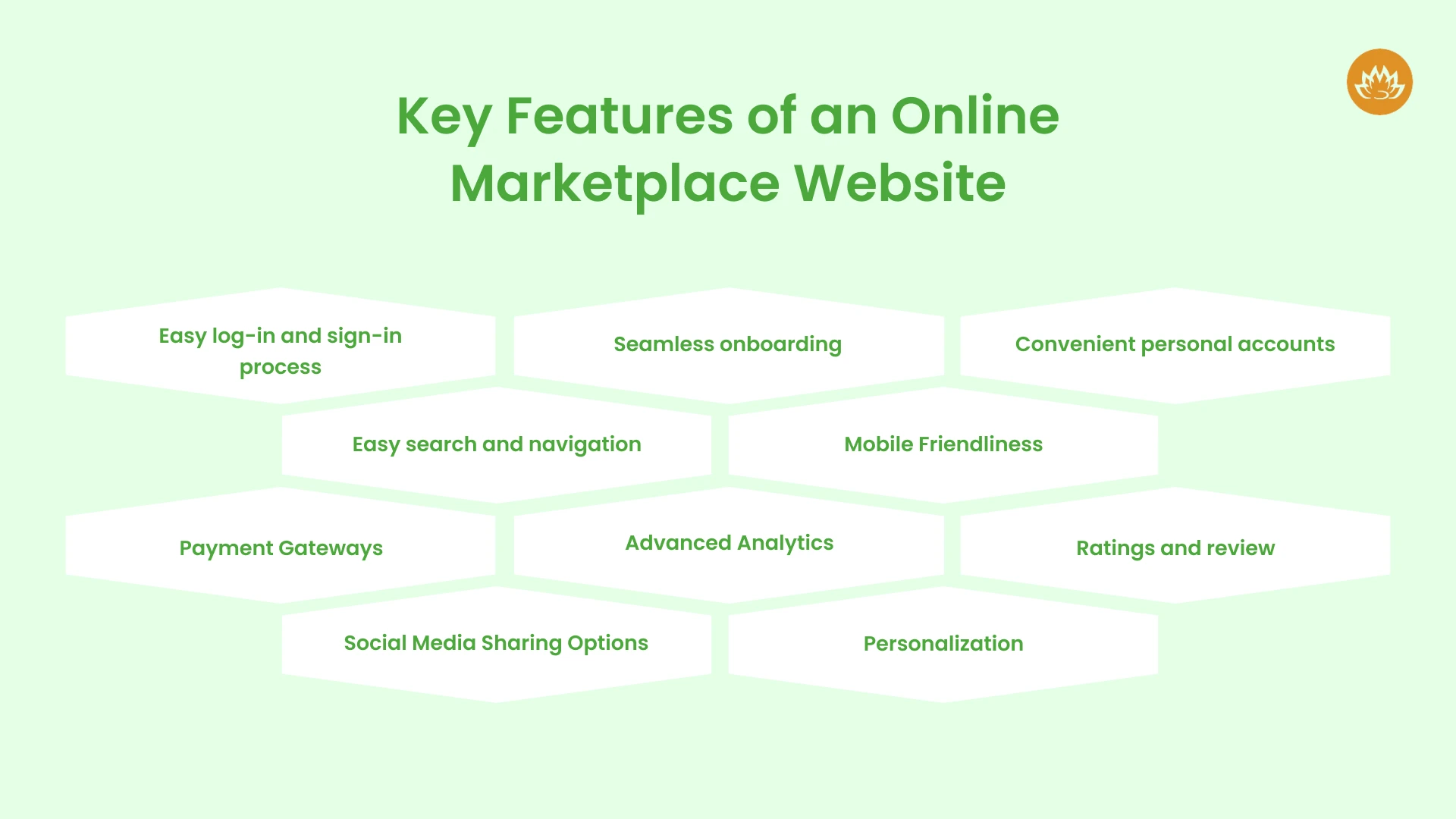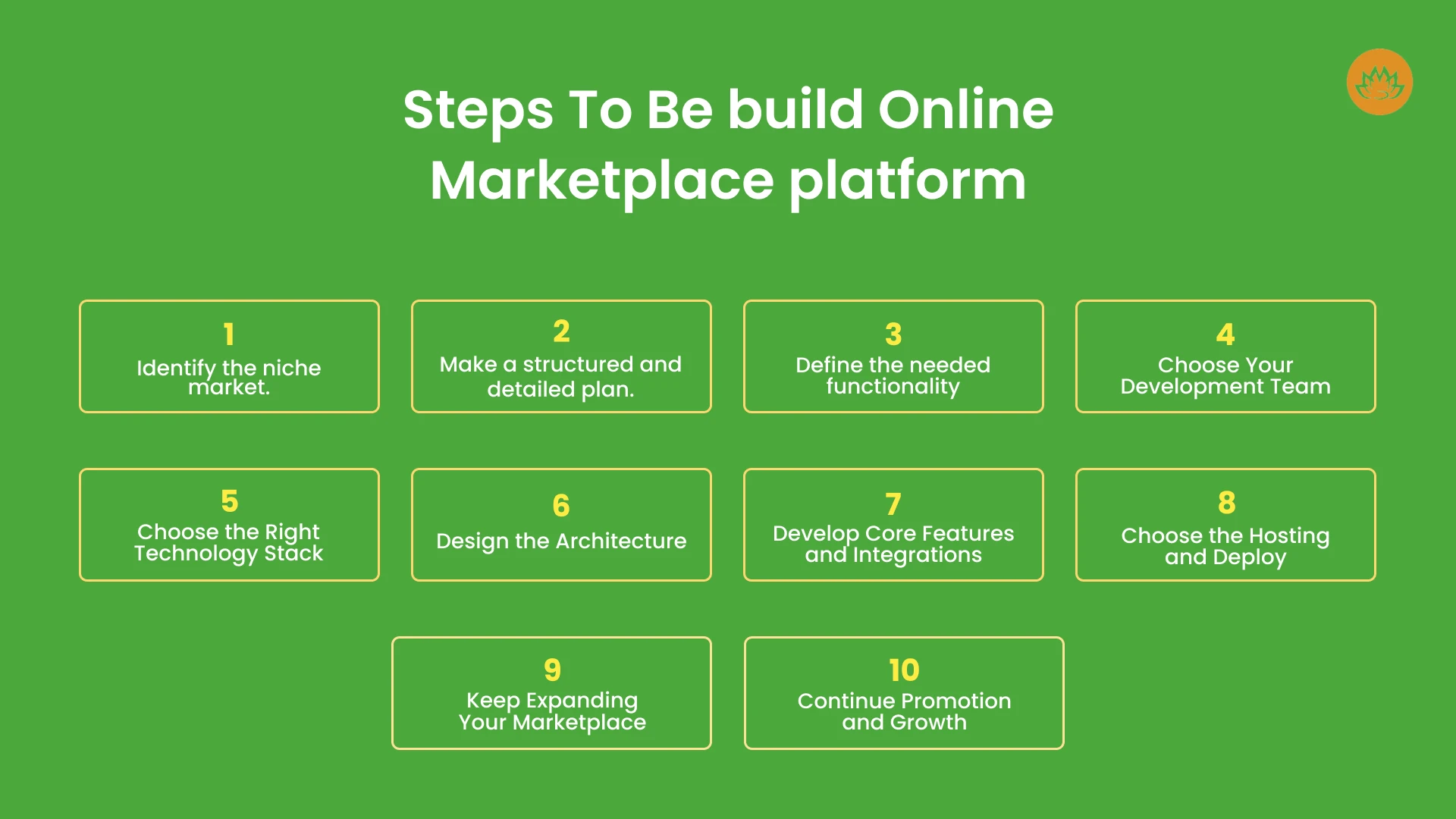What is an Online Marketplace?
Pros of Using Flutter
By Type
B2B (business-to-business)
B2C (business-to-consumer)
C2C (consumer-to-consumer)
Hybrid
By Specialization
Vertical Marketplaces
Horizontal Marketplaces
By Application
Mobile Marketplace
Web Marketplace
Others
Decentralized
Service-Focused
P2P Rental
What are The Key Features of an Online Marketplace Website

-
Easy log-in and sign-in process
-
Seamless onboarding
-
Convenient personal accounts
-
Mobile Friendliness
-
Payment Gateways
-
Advanced Analytics
-
Ratings and review
-
Social Media Sharing Options
-
Personalization
Essential Steps To Be Considered While Developing an Online Marketplace
Marketplace creation is a complex process that demands intense focus and effort and a certified mobile app development services provider. To minimize problems when designing and launching a marketplace, you must plan carefully and make data-driven decisions at each stage. So, how do you create an online marketplace website? See our step-by-step approach below.

Identify the niche market.
Make a structured and detailed plan.
-
The internal interface and website structure should be intuitive for the user. There should be no complicated algorithms that can turn off a client who has just viewed the resource.
-
The product catalog should be organized around widely approved and well-known categories. You do not need to create your own; you can thoroughly examine competing sites and rely on popular query and category ratings. In the future, respond to user requests, improve existing product categories, or establish new ones.
-
You should have a clear marketing strategy that includes both online and offline promotion of the project. From the start, it is critical to supply all channels and sources of communication for each target audience.
Define the needed functionality.
Choose Your Development Team
-
First, professionals must be highly qualified, have expertise in establishing new projects, and deliver custom ecommerce solutions.
-
Second, the most expensive services may only sometimes represent the finest quality. That is why you should pay close attention to the experience of the e-commerce website design firm you intend to engage.
Choose the Right Technology Stack
Client Interface: HTML, JavaScript, and CSS
Programming Languages: C++, Python, Java, PHP, Ruby, etc
Leading Frameworks and Libraries: React.js, Angular.js, Vue.js, Fusion.js, Ruby on Rails, Backbone.js, Django.
Databases/database management system: MongoDB, MySQL, Oracle
Cloud Solutions: Azure, Google Cloud, Amazon Web Services.
Design the Architecture
Monolithic Architecture
Microservices Architecture
Headless Architecture
Develop Core Features and Integrations
Choose the Hosting and Deploy
-
Choose a solution as per your budget requirements
-
Remember, underrated performance can reduce your sales
-
Your server should be able to scale with the increasing traffic effectively
-
Content delivery network should be for better speed and performance
-
For security, there should be SSL certificates, firewalls, spam filters, DDoS protection
-
Automated backups must be provided to ensure customer data safety.
-
There should be exceptional support from the hosting provider for troubleshooting.
Keep Expanding Your Marketplace
Continue Promotion and Growth
Final Thoughts
Author
-

Sunil is a result-orientated Chief Technology Officer with over a decade of deep technical experience delivering solutions to startups, entrepreneurs, and enterprises across the globe. Have led large-scale projects in mobile and web applications using technologies such as React Native, Flutter, Laravel, MEAN and MERN stack development.
View all posts











